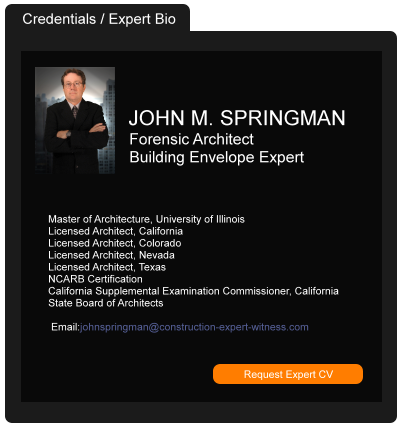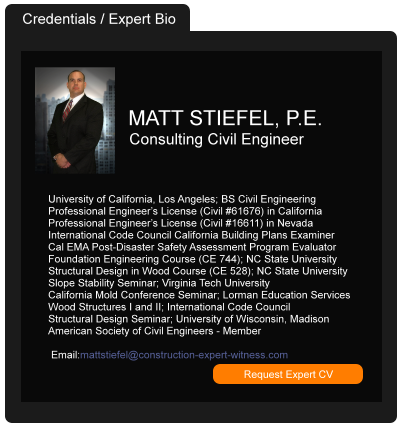To Ease Housing Crunch, Theme Parks Are Becoming Homebuilders
January 29, 2024 —
Patrick Sisson - BloombergFor visitors, Universal Studios Florida offers a chance to visit a fantastical land full of wizards, Minions and various characters from NBC Universal’s many film and television properties. But for the roughly 28,000 men and women who work at the 840-acre theme park and resort complex in Orlando, the troubles of the real world — like the rising cost of housing — are not far away.
Central Florida has seen some of the nation’s fastest pandemic-era rent increases, thanks to a confluence of job growth, migration and housing underproduction that has put a strain on residents. The average tenant in the region saw their monthly rent jump by $600 between early 2020 and early 2023. According to the National Low Income Housing Coalition, the Orlando-Kissimmee-Sanford metro area has one of the worst affordable housing shortages in the US, with only 15 available units for every 100 extremely low-income renter households.
The dire need for workforce housing is behind the entertainment conglomerate’s latest project in Central Florida: a 1,000-unit mixed-use development, set to open in 2026, that promises to give tenants who work in the service industry a short commute to the constellation of tourist attractions and hotels nearby. To launch the project, Universal donated 20 acres of land adjacent to the Orange County convention center. Called Catchlight Crossings and built in partnership with local developer Wendover Housing Partners, the project broke ground in November.
Read the court decisionRead the full story...Reprinted courtesy of
Patrick Sisson, Bloomberg
Labor Under the Miller Act And Estoppel of Statute of Limitations
May 08, 2023 —
David Adelstein - Florida Construction Legal UpdatesIf you want a case that goes into history of the federal Miller Act, check out the Fourth Circuit Court of Appeal’s opinion in U.S. ex rel. Dickson v. Fidelity and Deposit Company of Maryland, 2023 WL 3083440 (4th Cir. 2023). While I am not going to delve into this history, it’s a worthwhile read. It is also a worthwhile read for two other points.
First, it discusses what constitutes “labor” under the Miller Act.
Second, it discusses doctrine of estoppel to prevent a surety from raising the statute of limitations to bar a Miller Act payment bond claim, which is a doctrine you do NOT want to rely on, as this case reinforces.
Both of these points applicable to Miller Act claims are discussed below.
This case dealt with a prime contractor renovating staircases that was terminated by the federal government. The prime contractor hired a professional engineer as its subcontractor to serve as its project manager and supervise labor on the project. The engineer/subcontractor also had “logistical and clerical duties, taking various field measurements, cleaning the worksite, moving tools and materials, and sometimes even watering the concrete himself.” Dickson, supra, at *1.
Read the court decisionRead the full story...Reprinted courtesy of
David Adelstein, Kirwin Norris, P.A.Mr. Adelstein may be contacted at
dma@kirwinnorris.com
Public-Private Partnerships: When Will Reality Meet the Promise?
October 09, 2018 —
Richard Fechner, GHD - Engineering News-RecordThe promise of public-private partnerships (P3s) seems irresistible. The $4.5-trillion that the American Society of Civil Engineers says the U.S. must spend on at-risk infrastructure by 2025 is a backlog beyond the collective means of local, state and federal governments to fund and deliver.
Read the court decisionRead the full story...Reprinted courtesy of
Richard Fechner, GHD, ENRENR may be contacted at
ENR.com@bnpmedia.com
ASCE Statement on EPA Lead Pipe and Paint Action Plan
December 27, 2021 —
Tom Smith, Executive Director - American Society of Civil Engineers (ASCE)WASHINGTON, DC. – The American Society of Civil Engineers applauds
the Lead Pipe and Paint Action Plan released yesterday by the Environmental Protection Agency to help communities across the country remove lead pipes out of their drinking water systems.
Access to clean and safe drinking water is critical to public health and economic prosperity, and ASCE's
2021 Report Card for America's Infrastructure. gave a grade of C- for the drinking water category. It is estimated that as many as 10 million American households still have lead water pipes in use, which can put at risk the health and safety of families, particularly children. For utilities, moving forward with completing an inventory of lead service lines as part of the Lead and Copper Rule is a critical step, so we can get a better national picture of the scope of the problem.
This plan will allocate nearly $3 billion from the recently passed Infrastructure Investment and Jobs Act (IIJA) to states for lead service line replacements in FY 2022 and will prioritize communities with the highest lead levels. While additional investment will be needed, it is a significant down-payment on a national shared priority of clean drinking water for all Americans. It will allow utilities of all sizes to accelerate their rate of lead pipe replacement and offer technical assistance to those communities just embarking on these types of projects.
For more information about the American Society of Civil Engineers, visit www.asce.org or www.infrastructurereportcard.org and follow us on Twitter, @ASCETweets and @ASCEGovRel.
Read the court decisionRead the full story...Reprinted courtesy of
Colorado’s Federal District Court Finds Carriers Have Joint and Several Defense Duties
July 31, 2013 —
Tred Eyerly, Insurance Law HawaiiAn issue that has plagued builders in Colorado construction defect litigation is the difficulty of getting additional insured carriers to fully participate in the builder’s defense, oftentimes leaving the builder to fund its own defense during the course of the litigation.
Many additional insurers offer a variety of positions regarding why they will not pay for fees and costs during the course of a lawsuit. Some insurers argue that, until after trial, it is impossible to determine its proper share of the defense, and therefore cannot make any payments until the liability is determined as to all of the potentially contributing policies. (This is often referred to as the “defense follows indemnity” approach.) Others may make an opening contribution to defense fees and costs, but fall silent as fees and costs accumulate. In such an event, the builder may be forced to fund all or part of its own defense, while the uncooperative additional insured carrier waits for the end of the lawsuit or is faced with other legal action before it makes other contributions.
Recent orders in two, currently ongoing, U.S. District Court cases provide clarity on the duty to defend in Colorado, holding that multiple insurers’ duty to defend is joint and several. The insured does not have to go without a defense while the various insurers argue amongst themselves as to which insurer pays what share.
Read the court decisionRead the full story...Reprinted courtesy of
Tred EyerlyTred Eyerly can be contacted at
te@hawaiilawyer.com
Insured's Lack of Knowledge of Tenant's Growing Marijuana Means Coverage Afforded for Fire Loss
August 17, 2020 —
Tred R. Eyerly - Insurance Law HawaiiThe California Court of Appeals reversed the trial court's grant of summary judgment to the insurer regarding a claim for fire loss. Mosley v. Pacific Sec. Ins, Co., 2020 Cal. App LEXIS (Cal. Ct. App, May 26, 2020).
The Mosleys rented their property to Pedro Lopez. Six months later, the property was damaged by fire. Lopez had tapped a main power line into the attic to power his energy-intensive marijuana growing operation. The illegal power line caused the fire.
Pacific Specialty Insurance Company (PSIC) insured the property under an HO-3 Standard Homeowners policy. Paragraph E of the policy provided,
We do not insure for loss resulting from any manufacturing, product or operation, engaged in:
- The growing of plants; or
- The manufacture, production, operation or processing of chemical, biological, animal or plant materials.
Read the court decisionRead the full story...Reprinted courtesy of
Tred R. Eyerly, Damon Key Leong Kupchak HastertMr. Eyerly may be contacted at
te@hawaiilawyer.com
How Robotics Can Improve Construction and Demolition Waste Sorting
September 11, 2023 —
Emily Newton - Construction ExecutiveCommercial construction projects generate a lot of waste. Managing this debris is crucial to minimizing the industry’s environmental impact, but it’s often a time-consuming and error-prone process. Robotic waste sorting provides a better alternative.
Why C&D Waste Management Must Improve
The current state of construction and demolition (C&D) debris management leaves considerable room for improvement. Nearly all C&D waste takes
decades to break down in landfills—and the sector generates hundreds of millions of tons of it annually.
More efficient debris management would help firms protect the environment and their bottom line. Poor waste management practices also take an economic toll. Recycling extends materials’ useful life, helping minimize resource costs. Inefficient waste sorting may additionally lead to unnecessarily high workforce expenses and incur lost business from firms’ lack of sustainability.
Reprinted courtesy of
Emily Newton, Construction Executive, a publication of Associated Builders and Contractors. All rights reserved.
Read the court decisionRead the full story...Reprinted courtesy of
Property Owner’s Defense Goes Up in Smoke in Careless Smoking Case
September 23, 2019 —
Michael J. Ciamaichelo - The Subrogation StrategistProperty owners owe a duty of reasonable care to avoid causing harm to neighboring properties. When a property owner knows or should know about a condition that poses a risk of danger to neighboring properties, the property owner must exercise reasonable care to make the condition safe. The Court of Special Appeals of Maryland recently held that, where hundreds of discarded cigarette butts had accumulated in a bed of mulch over an extended period of time prior to the fire at issue, the owner of the property with the mulch beds owed a duty of care to its neighbors to prevent a foreseeable fire.
In Steamfitters Local Union No. 602 v. Erie Insurance Exchange, 2019 Md. App. LEXIS 430 (May 30, 2019), a fire originated in a strip of mulch at property owned by the Steamfitters Local Union No. 602 (Union) and caused damage to neighboring properties. The fire occurred when an unknown person discarded a cigarette butt into the mulch. Following the fire, investigators found “hundreds, if not thousands of cigarettes” in the mulch where the fire originated. A representative for the Union acknowledged that there were more butts in the mulch “than there should have been” and that, “[i]n the right situation,” a carelessly discarded cigarette could cause a fire. The Union, however, had no rules or signs to prohibit or regulate smoking at the property, where apprentices would often gather prior to class.
The insurance companies for the damaged neighbors filed subrogation actions alleging that the Union, as the property owner, failed to use reasonable care to prevent a foreseeable fire. A jury found in favor of the subrogating insurers and against the Union.
Read the court decisionRead the full story...Reprinted courtesy of
Michael J. Ciamaichelo, White and Williams LLPMr. Ciamaichelo may be contacted at
ciamaichelom@whiteandwilliams.com


































































